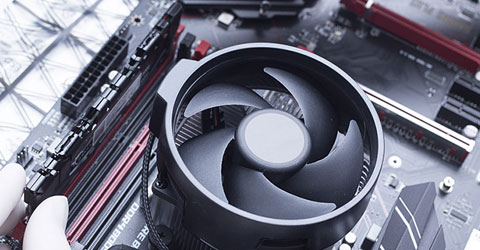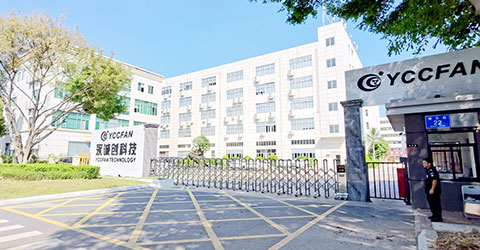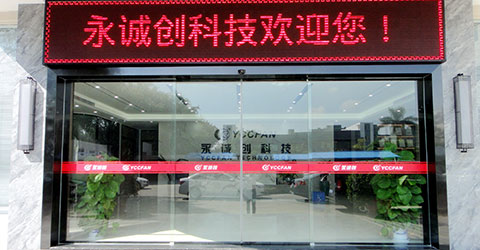Top 5 Applications of Micro Fans for Electronics
Many electronic devices rely on cooling solutions to prevent overheating and related damage. A micro-fan plays a significant role in maintaining an optimal temperature for most electronic gadgets. As they are integrated with efficient heat dissipation features, these small ventilation fans are ideal for thermal cooling.
In this guide, we will discuss the top applications of micro-fans for electronics and the specific requirements to manage them efficiently.

Micro-fan Applications for Electronics
With its concise design and efficient cooling capabilities, a micro-fan effectively supports the optimal functionality of many consumer electronics. Televisions, laptops, and tablets all employ a micro electric fan for cooling. From aerospace to medical equipment, these miniature cooling solutions ensure the reliability and longevity of electronic systems.
Let's discuss the use of cooling fans comprehensively.
Aerospace Electronics
Miniature fans are utilized in various aerospace electronic components for efficient thermal regulation. For example, many avionics systems, communication equipment, and onboard computers are integrated with micro-fan technology.
These fans help release the surplus heat generated during flight and ensure operational functionality. Especially in demanding aerospace environments where temperatures change rapidly, the micro-fan offers targeted cooling to critical components.
Industrial Electronics
In industries, maintaining optimal conditions for the reliable functioning of critical equipment is important. Due to the heavy-duty usage of electronics in a harsh environment, thermal management becomes a challenge.
For that, a mini industrial fan emerges as a promising solution. By offering a robust cooling solution, this innovative technology prevents overheating-related failures. The small industrial fan not only extends the lifespan of critical components but also ensures continuous business operations.
Medical Equipment
A micro-fan plays a pivotal role in ensuring the safe performance of medical equipment. The temperature requirements of medical devices require efficient heat management to ensure precision and patient safety. By effectively dissipating heat, the cooling fan maintains stable operation.
Moreover, their compact size, low noise levels, and energy-efficient operation make them perfect for medical equipment. It supports the reliability and performance standards required in healthcare settings.
Data Centers and Networking
The operation of data centers involves electronic components that produce a lot of heat during operation. Likewise, networking equipment such as switches and routers operates at specified temperature ranges. Without proper cooling, these networking segments can experience thermal stress. It leads to performance degradation and potential hardware failures.
For that, a micro-fan serves as a lifesaver. It addresses this challenge by offering sufficient cooling to hotspots within the data center and networking infrastructure.
Renewable Energy System
Renewable energy solutions, such as solar-powered inverters or wind turbine controls, require proper heat management. During their operations, they produce heat that needs to be discharged to prevent potential damage. Micro-fans contribute to the efficiency of renewable systems by ensuring adequate thermal release. They offer necessary cooling to uphold the operational efficiency of sustainable energy solutions.

Micro-fan Design Challenges
Despite their compact size and efficiency, micro-fans face design challenges that require careful consideration. These challenges include:
● Often made up of silicon steel motors, which are pretty hard to miniaturize.
● Some designs can offer performance issues. It may include flow loss at the intake, air leakage, flow separation, and disc friction. They all reduce the airflow strength created by these micro-fans.
● Also susceptible to power loss when working in higher heat ranges.
Meeting these design challenges is essential to maximizing the effectiveness of micro-fans in diverse electronic applications.
How Does a Micro-fan Work?
Micro-fans work on the principle of generating airflow to dissipate heat from electronic components. They achieve their goal by harnessing the rotational energy of an electric motor to produce airflow. This airflow is then directed towards heat-generating components within electronics.
As the air passes over these components, it dissipates the heat, effectively cooling the electronics. The design of the micro-fan is optimized to achieve efficient cooling while alleviating noise and power consumption.
How Big Are They?
Micro-fans are characterized by their small size, typically ranging from a few millimeters to a few centimeters in diameter. The exact size can change depending on the specific application and the manufacturer's design choices.
YCCFAN's Micro-fan
So, if you are ready to invest in a reliable micro-fan, connect with YCCFAN. As a leading cooling fan manufacturer, we offer high-quality cooling fans that are utilized in the fields of automotive, communication, telecommunication, home appliances, and medical gear. We also hail ODM, OEM customized projects.
Two of our prominent products are:
● DC3010 DC Fan: It is a small DC fan that is constructed with a glass fiber-reinforced plastic section. The DC210 DC Fan has a compact size of 30x30x10mm. It offers an insulation resistance of 10 megaohms and a dielectric strength of 5 mA max.
● DC2507 Micro Blower: This micro-fan model offers a more compact size of 20x20x6mm. The core materials are glass fiber-reinforced plastic, and it also contains a stainless steel metal plate. The operating temperature of the DC2507 Micro Blower is 10°C ~ +70°C. It offers an insulation impedance of more than 10 megohms.

Conclusion
According to the latest news from Open PR, the global micro-fan market is expected to grow at a meteoric 4.3% CAGR in 2024-2031. These trends underscore the continuous evolution of micro-fan technology to meet the surging demands of modern electronics and contribute to sustainability goals. They offer efficient cooling solutions and have diverse applications.
In short, micro-fans have emerged as indispensable products in the electronics industry. So, if you are looking for highly functional mini fans, look no further than YCCFAN. We are committed to providing reliable cooling fans that offer high ventilation capacity!








